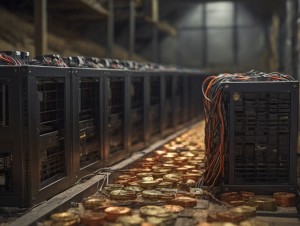Huawei has introduced a new cryptocurrency token to the market. Huawei launched a promotional video for Defactor on its official Twitter account on February 21, which has garnered traction over the last 24 hours. Interestingly, t his relationship began well before Huawei’s arrival in Dublin.
End of last year, Huawei partnered with Dublin’s Dogpatch Labs to support a number of Irish startups in expanding abroad. Around that period, the IT giant selected ten Irish start-ups to participate in a new accelerator program managed by Dogpatch Labs. In addition, Huawei would provide market access, technical assistance, and experience.
Huawei introduces a new token to the industry
The bull run on the cryptocurrency market has piqued the interest of corporations. As a result, some well-known and well-recognized organizations have begun to enter the industry in order to make good use of the crypto bull run. In the past several days, giant corporations such as Google and Microsoft have announced multiple agreements.
On the other hand, Huawei introduced a cryptocurrency that has not yet achieved widespread social media notoriety. In a video upload, Huawei incorporated a digital currency called Defactor, and the market has responded in positivity.
Less than two days ago, Huawei released a Defactor promotional video on its official Twitter account on February 21. Huawei tweeted: “defactor is a start-up that bridges traditional financing to the new world of #DeFi. Check out their journey at the Huawei International Scale-Up Programme in Ireland.”
.@defactor_ is a start-up that bridges traditional financing to the new world of #DeFi. Check out their journey at the Huawei International Scale-Up Programme in Ireland delivered by @dogpatchlabs. Watch now: https://t.co/yVwZuyPx0O
— Huawei (@Huawei) February 21, 2023
The DeFi video released by the Chinese technology firm Huawei has also had a good effect on the project’s cost. The tech giant’s production and release of a promotional video for the DeFi project Defactor resulted in a 530% gain in the project’s token, FACTR, in the last twenty-four hours.
Looking at the market valuation of FACTR, it was discovered that it was roughly 2-3 million dollars before Huawei’s participation. This pricing can be explored as part of a project known as shitcoin. Huawei raised eyebrows by distributing such an unknown and unattractive cryptocurrency.
This altcoin‘s growth rate over the past month appears to have exceeded 3000%. Yet, an account that was created only 13 days ago and acquired 200,000 FACTR tokens immediately upon opening sold nearly all of the tokens it purchased after today’s increase. The selling account generated a quick profit of $25,000.
Defactor stands out for its emphasis on applying blockchain technology to improve existing factoring, trade finance, and inventory finance processes. Unfortunately, the project is not yet listed on any exchange and can only be traded on the decentralized market Uniswap.
Understanding Defactor and what it brings to the market
Huawei began this journey by incorporating 10 start-ups from Dublin. Former Start-ups of the Week Tracworx, HaloSOS, Energy Elephant, Xpanse, and Sensipass are among the companies chosen to participate in the boot camp. Empeal, Little Red Edu, Helgen, Graphite Note, and Defactor are among the other selected start-ups.
Huawei’s contribution included a description of Defactor and its function. Defactor is an integration layer and set of tools meant to assist traditional organizations in leveraging decentralized finance (DeFi) using their existing systems and processes. In addition, the tool facilitates the use of DeFi by novice institutions by facilitating contact with the blockchain.
Defactor is at the forefront of real-world asset innovation, allowing SMEs to get alternative funding by tokenizing real-world assets. In addition, defactor is paving the way by offering a finance platform for Fintechs and Family Offices.
Accounts receivable, inventory, supply chain, and purchase orders are examples of asset groups that may qualify for financing.
This same revolution allows investors or liquidity providers to engage in funds enabling this financing form. These investments are frequently short-term and generate consistent returns that are not affected by the overall financial situation.
Despite the upheaval, 2022 was a year of development and refinement for Defactor. The lack of transparency in centralized finance, as well as the inflated yields prevalent in DeFi, were exposed, resetting the entire blockchain business. It did, however, present a road ahead for real-world assets.





